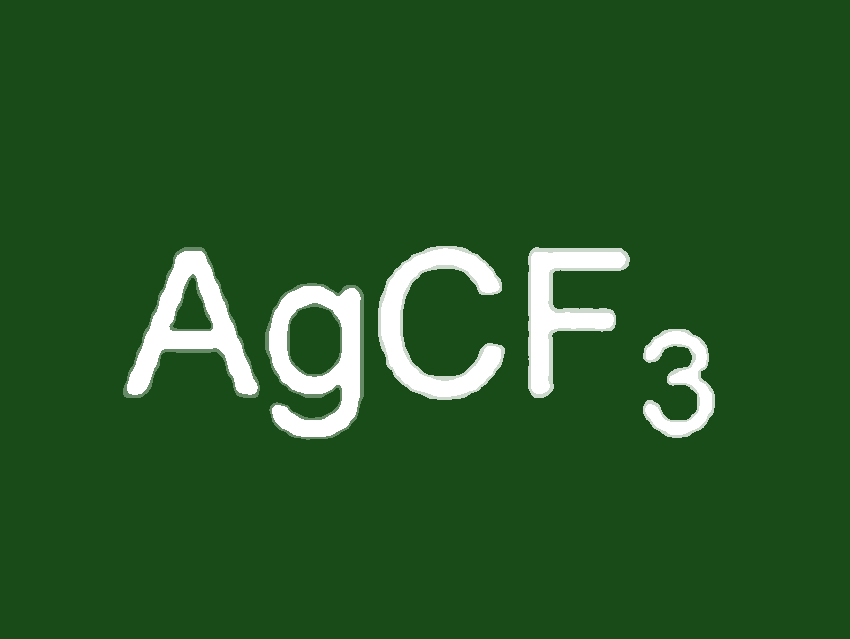Fluoropolymer manufacturing produces a large volume of fluoroform (HCF3) as a byproduct. Fluoroform is a potent greenhouse gas. Using HCF3 as a trifluoromethylating reagent is preferable to its destruction. However, known applications of HCF3 are limited to nucleophilic and copper-promoted trifluoromethylation reactions. Converting HCF3 to metal–CF3 complexes could broaden the synthetic applications.
Feng-Ling Qing, Donghua University, Shanghai, China, and Shanghai Institute of Organic Chemistry, Chinese Academy of Sciences, and colleagues have developed a method for the transformation of HCF3 into synthetically useful AgCF3. Treatment of HCF3 with tBuOK and AgOAc in N,N-dimethylformamide (DMF) produces a stable AgCF3 solution. Until now, solutions of AgCF3 had to be freshly prepared from trifluoromethyltrimethylsilane and AgF in acetonitrile, because they were unstable and sensitive to both light and heat. The team investigated the reason for the improved stability and found that tBuOK is crucial to the stability of AgCF3.
The researchers used the stable AgCF3 solution in radical trifluoromethylation reactions, such as the hydrotrifluoromethylation of alkenes and the C–H trifluoromethylation of (hetero)arenes. The developed method also allows the conversion of HCF2CF3 into AgCF2CF3 for the synthesis of pentafluoroethylated products.
- Argentination of Fluoroform: Preparation of a Stable AgCF3 Solution with Diverse Reactivities,
Jia-Xiang Xiang, Yao Ouyang, Xiu-Hua Xu, Feng-Ling Qing,
Angew. Chem. Int. Ed. 2019.
https://doi.org/10.1002/anie.201905782




